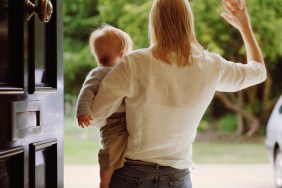The cost to raise a child born in 2013 to age 18 has risen to $245,340, according to the U.S. Department of Agriculture’s annual report released this week.
The department’s Expenditures on Children and Families, commonly known as “the cost of raising a child,” shows an overall 1.8 percent increase over last year, and informs new parents that they can expect to spend about $245,340 (or $304,480 adjusted for projected inflation) for food, housing, childcare, education and other child-related expenses up to age 18. Costs of pregnancy and any higher education aren’t included.
Kevin Concannon, USDA Consumer Services Under-Secretary for Food, Nutrition and Consumer Services, says the report is important in today’s economy, so “parents can prepare for the future with as much information as possible.” Concannon speaks further about the report on the USDA blog.
As in the past, cost vary by region, with families living in the urban Northeast spending more than those who live in the urban South or in rural parts of the country. Housing costs remain the biggest expense, making up roughly 30 percent of total estimated cost. Other big-ticket items were child care and the costs associated with education coming in at 18 percent each, and food at 16 percent
USDA’s Expenditures on Children by Families offers a cost calculator where families can enter the number and ages of their children to get some realistic estimates, as well as finding other helpful tools and tips.
The report is based on data from the federal government’s Consumer Expenditure Survey, and notes that family income also can affect child-rearing costs. Because food is a consistently large expense, The Center for Nutrition Policy and Promotion Executive Director Angela Tagtow points out resources such as USDA’s Choose My Plate for ideas and recipes to help families serve meals that are both nutritious and affordable.
The Associated Press reported that expenses per child decrease as a family has more children. Families with three or more kids spend 22 percent less per child than families with two children. As families increase in size, the children often share bedrooms, clothing and toys, food is purchased in larger and more economical quantities, and child care centers and private schools frequently offer sibling discounts. AP noted that in 1960, the first year the report was issued, a middle-income family could spend about $25,230, equivalent to $198,560 in 2013 dollars, to raise a child until the age of 18.
The full report is available at the CNPP web site.
Photo: Getty








